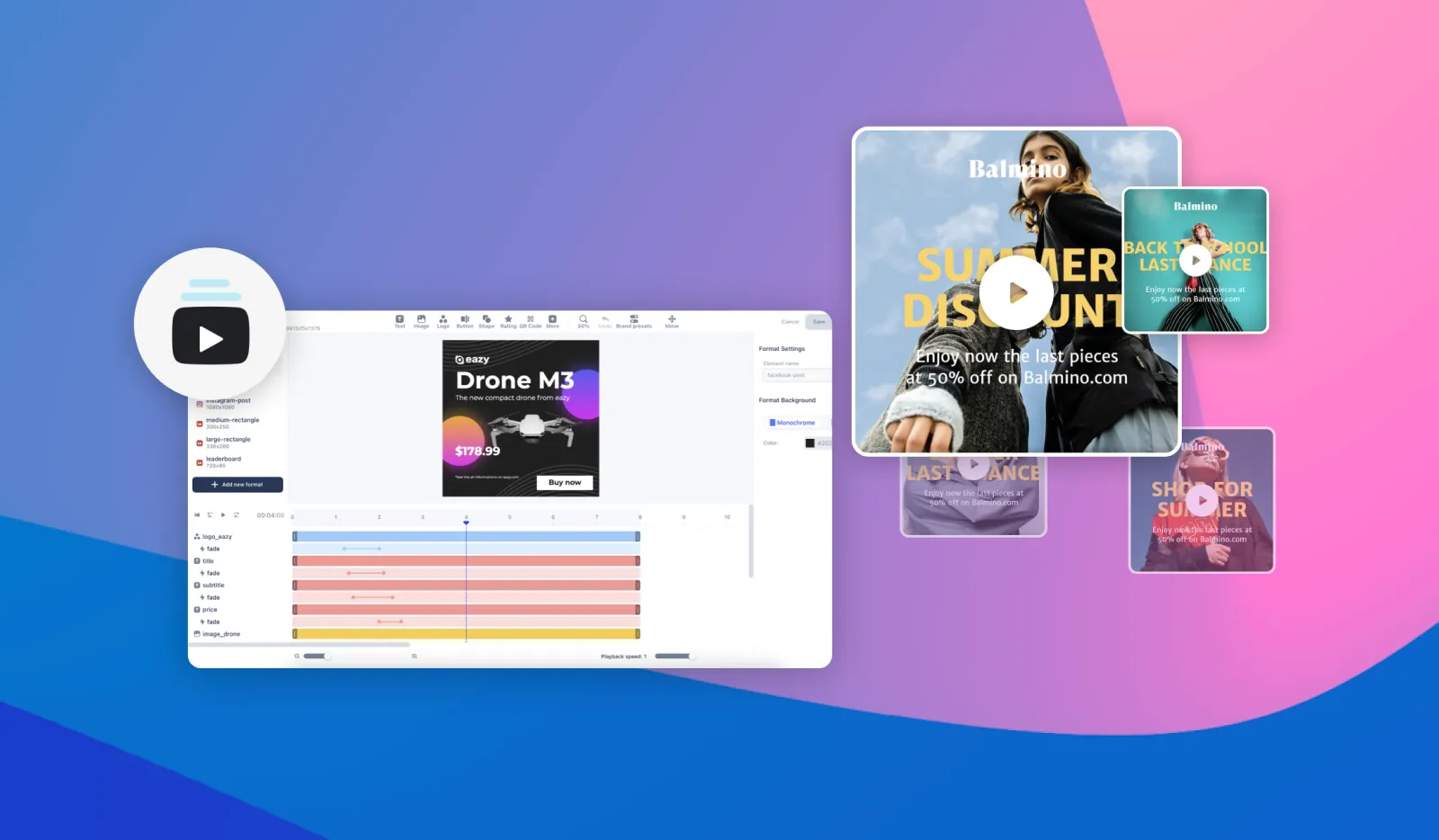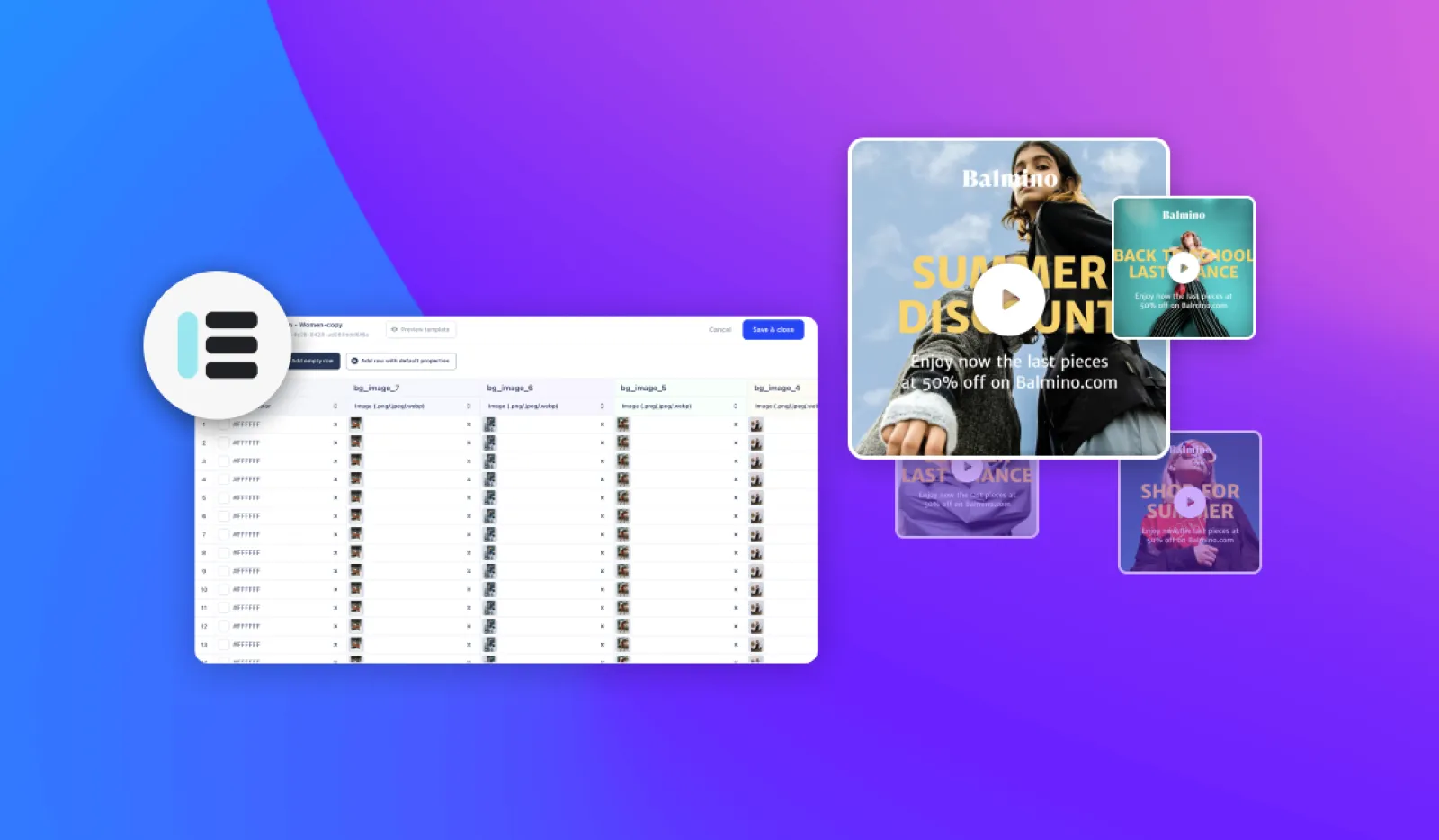How to optimize your use of Photoshop for better visual creations
How to optimize your use of Photoshop for better visual creations
%2520(5).webp)
You're probably a Photoshop user to retouch your photos or create visuals. The multiple functionalities offered by this software allow you to push back the limits of creativity.
However, with so many options, it's easy to get lost and overwhelmed. So how do you get the most out of Photoshop without being a Photoshop virtuoso?
We'll try to answer that question in this article. Let us share with you what you need to know about Photoshop to optimize its use and create better visuals.
Organize your library
If you regularly use the same elements (images, text, layers, etc.), it's in your interest to organize your libraries in which you store them. It's very basic, but the time savings will be phenomenal.
Organize your layers
Another Photoshop reflex is to organize your layers. This means arranging them by function group (text, image, background, etc.) and renaming them. This way, whenever you need to modify a layer, you won't waste time identifying it.
The procedure is very simple. Right-click on the layer, then click on "rename". Then drag and drop the layer into a folder you've created to store other layers of the same nature.
Using keyboard shortcuts
This is undoubtedly one of the big game-changers for fast command execution on Photoshop. If you can't remember them all, at least learn the most common ones, such as :
- Shift + Ctrl + N for a new layer
- Shift + Ctrl + Q to scale basic content
- Ctrl + U to open color hue/saturation
- etc
You'll find all the keyboard shortcuts on this Ionos page.
And if this doesn't suit you, you can always modify them in Edit > Keyboard shortcuts or Window > Workspace > Keyboard shortcuts and menus.
This gives you the choice of creating keyboard shortcuts for application menus, panel menus or the tool palette.
Understanding blend modes
Merge modes allow you to combine pixels from different layers and harmonize two overlapping images. The combination varies according to the type of blend. If you master blending modes, you'll be able to create unique effects on your visuals.
Some of the most practical blend modes are :
- Product: It's like drawing with several markers on one image. The base colors merge to become darker.
- Lighten: Pixels darker than the blend color are replaced, while lighter pixels remain intact.
- Overlay: This blend combines colors according to the base hue, preserving both light and dark tones. The original color remains, blending with the added color to reproduce light and dark shades.
- Color: It maintains the luminance of the base color and the hue and saturation of the blend color. It therefore has no impact on grayscale.
To activate a blend mode, select a layer, then choose a blend mode from the drop-down list above the layers window.
Use actions and scripts
This is a way of automating certain frequently recurring operations. Actions and scripts can improve efficiency and save time.
Let's take an example. Let's say you have a folder containing several image elements that you'd like to insert into your design. However, the dimensions of these images vary. In this case, you can create an action to resize these images with a single click.
To manage actions, go to Windows > Actions. Once the window is open, click on the 4-line icon at top right and select "Load actions".
Learn non-destructive work
If you've been using the tool for a while, you've probably realized that nothing is perfect the first time. Sometimes you have to delete or improve certain changes you've made. Except that this is not always possible without undoing some of the work you've already done. Ctrl + Z is not always the best solution.
To avoid this situation, you can work non-destructively with dynamic layers, empty instinctive layers, adjustment layers or blend masks, for example.
This way of working is a real philosophy that can be very practical in your creative processes. Don't hesitate to do your research on non-destructive work.
Optimize Photoshop performance
Did you know that you can "boost" Photoshop to improve its performance? Cache size, memory or GPU management are all parameters you can control to adjust your preferences.
If, for example, you want to improve Photoshop's execution speed, simply increase the amount of RAM reserved for it.
To do this, click on Edit (or Photoshop on Mac) > Preferences > Performance and adjust your preferences.
Using vector masks
Vector masks enable you to make sharp, precise adjustments. Unlike pixel-based masks, they are ideal for creating specific shapes that don't become distorted as you make adjustments.
To use a vector mask, select a layer, then click on vector mask. Then choose the function you wish to give to this mask (make the layer appear or disappear).
Use plug-ins & tools
One sure way to optimize your creative output on Photoshop is with plug-ins. They offer new or more advanced functionalities than Photoshop itself.
We won't list them all here. We did an article for the occasion. However, there is a tool we'd like to share with you: Export Photoshop PSD. It's very handy if you want to multiply the versions of a visual without spending hours on it.
This tool lets you retrieve all the layers in your Photoshop visual and export them to an Abyssale template. You can then simply automate the generation of a multitude of versions with different texts, images and colors.
If you'd like to find out how to use this tool, we refer you to this link.
Finally, Photoshop is a very complete tool for visual creation. However, to get the most out of it, it's essential to be well organized. Also, a knowledge of the most practical features enables you to get the most out of Photoshop without being an expert.
With the practices shared above, you'll be able to optimize the rendering of your visual creations without spending extra time on them. If you'd like more tips on optimizing your visual creations, please follow us on Linkedin.
Get started for free
Master Abyssale’s spreadsheet
Explore our guides and tutorials to unlock the full potential of Abyssale's spreadsheet feature for scaled content production.

How to auto transform Instagram Posts into Reels





